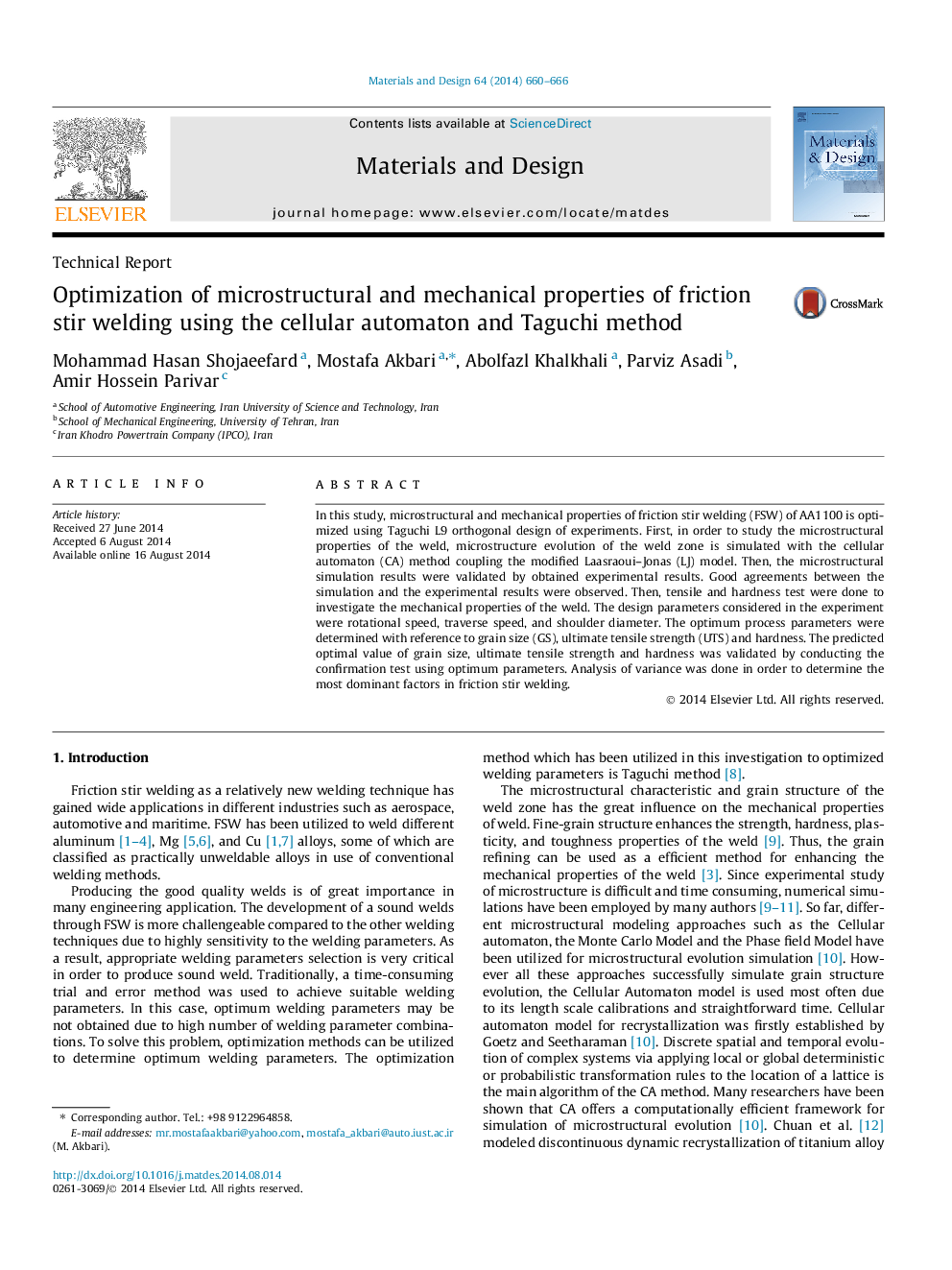| Article ID | Journal | Published Year | Pages | File Type |
|---|---|---|---|---|
| 828953 | Materials & Design (1980-2015) | 2014 | 7 Pages |
•The microstructural evolution during FSW was successfully simulated and validated.•The optimum levels of the tilt angle, rotational and transverse speed are obtained.•The significance of design parameters on grain size, hardness and UTS was determined.•The effects of design parameters on grain size, hardness and UTS were discussed.
In this study, microstructural and mechanical properties of friction stir welding (FSW) of AA1100 is optimized using Taguchi L9 orthogonal design of experiments. First, in order to study the microstructural properties of the weld, microstructure evolution of the weld zone is simulated with the cellular automaton (CA) method coupling the modified Laasraoui–Jonas (LJ) model. Then, the microstructural simulation results were validated by obtained experimental results. Good agreements between the simulation and the experimental results were observed. Then, tensile and hardness test were done to investigate the mechanical properties of the weld. The design parameters considered in the experiment were rotational speed, traverse speed, and shoulder diameter. The optimum process parameters were determined with reference to grain size (GS), ultimate tensile strength (UTS) and hardness. The predicted optimal value of grain size, ultimate tensile strength and hardness was validated by conducting the confirmation test using optimum parameters. Analysis of variance was done in order to determine the most dominant factors in friction stir welding.
